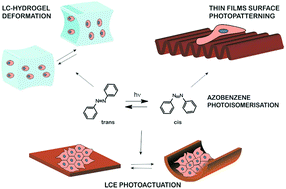Azobenzene-based polymers: emerging applications as cell culture platforms
Abstract
The fabrication of biomaterials whose properties are activated or inhibited on demand via light is appealing for fundamental biological studies as well as for the development of new applications in tissue engineering and regenerative medicine. One of the most widely used molecules in light-controlled systems is azobenzene for its ability to isomerise in response to light. In this minireview, the fundamental landmarks towards the application of azobenzene-containing materials as cell culture substrates will be highlighted, foreseeing their massive use as next-generation cell-instructive materials.



 Please wait while we load your content...
Please wait while we load your content...